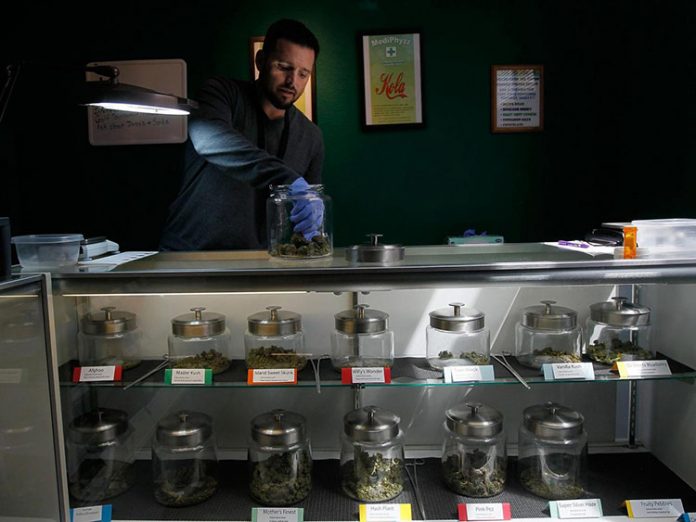An Oceanside ordinance that would allow the cultivation, manufacture and sale of medical marijuana received an enthusiastic and unanimous endorsement this week from the city’s Planning Commission.
Several commissioners even suggested taking the proposal further, by allowing larger areas for nurseries and more dispensaries where medical cannabis and related products could be sold to the public. They also pointed out that many residents support the use of recreational marijuana, which is not allowed under the proposal.
“This is a good start, with this ordinance,” said Commissioner Kyle Krahel-Frolander, but added, “I would like to see a more bold and forward-thinking approach.”
The commission’s decision Monday night is only a recommendation to the City Council, which will consider the ordinance after a presentation and public hearing at its March 28 meeting.
Approval by the council is far from guaranteed.
The council agreed in December to have city staffers prepare the ordinance, but on a 3-1 vote, with Councilwoman Esther Sanchez opposed. Councilman Jack Feller reluctantly voted aye only after staffers agreed that the ordinance would allow only medical marijuana and not recreational uses.
Another factor in the upcoming decision is the council’s newest member. The four elected officials appointed former city manager Peter Weiss as mayor in January to fill the vacant seat of former Mayor Jim Wood, who retired because of lingering health problems. Weiss has not indicated whether he would support the proposal.
Both the city’s police chief and fire chief have gone on record opposing any legalization.
Among the concerns listed by Police Chief Frank McCoy are an increased potential for crime, easier access to marijuana for juveniles, lingering ties to the black market and criminal gangs, and the costs to his department for additional labor and enforcement.
Fire Chief Rick Robinson’s concerns include medical emergencies with marijuana, accidental consumption of edibles by children and pets, smoke exposure to firefighters and paramedics, and the increased potential for vehicle accidents caused by impaired drivers.
An ad hoc committee appointed last year by the City Council, which studied the issue for months and held a series of community meetings, had recommended a maximum of four dispensaries in Oceanside. But city staffers suggested starting with two until officials have had at least a year to evaluate any potential negative effects on the community.
“I firmly believe that two is not a big enough number,” said Commissioner Curtis Busk. He said the city probably could support four to eight dispensaries.
Commissioner Claudia Troisi suggested the city loosen the limits proposed for the 1,000-foot buffer zones required between cultivation areas, and on the 10 percent of a farm that can be devoted to cannabis cultivation.
Space is limited in the rural Morro Hills area of northeast Oceanside where most of the cultivation would occur, she said, and the city should “utilize what we can as well as we can.”
Legalization has strong support among Oceanside farmers, who see it as a cash crop to replace traditional farm products such as tomatoes and avocados that are being forced out by the increasing costs of water and labor. Many people also advocate cannabis to relieve chronic pain in patients, especially the elderly, who otherwise could become addicted to opiates.
Opponents of legalization say other options are available for pain, and that the ordinance will increase crime, make law enforcement more difficult, and introduce more young people to marijuana, possibly leading them to try other drugs.
California voters approved medical marijuana in 2015, and recreational use in 2016. The state laws set broad guidelines for legalization, and allow local jurisdictions to approve their own prohibitions that take precedence over the state laws.
Most North County cities have adopted laws to prohibit commercial marijuana cultivation and sales, though Vista is also working on a legalization proposal.














